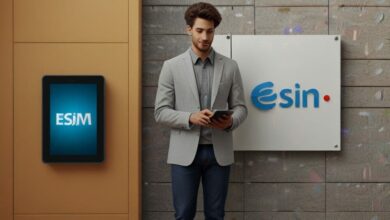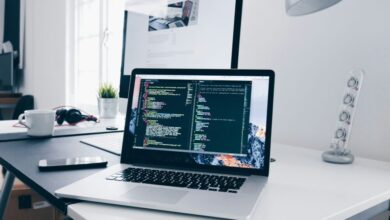The Role of Machine Learning in AI Art: Tools and Techniques Explained

Since the introduction of technology Machine learning is revolutionizing the world of art, giving artists powerful tools and techniques to enhance their creativity and productivity. By integrating machine learning algorithms into their workflows, artists can explore new styles, automate repetitive tasks, and push the boundaries of traditional art forms. As AI technology continues to evolve, it offers exciting possibilities for the future of art. Embracing machine learning as a partner in creativity can lead to unprecedented artistic expression and innovation.
Understanding Machine Learning in Art:
What is Machine Learning?
Machine learning involves training algorithms on large datasets to recognize patterns and make decisions. In the context of art, these algorithms learn from existing artworks, enabling them to generate new pieces, transform styles, and even collaborate with human artists.
The Evolution of AI Art:
Initially, AI art focused on generating simple patterns and procedural content. However, with advancements in machine learning, particularly deep learning and neural networks, AI art has evolved to create highly sophisticated and realistic artworks. These advancements allow artists to experiment with new styles and techniques that were previously unattainable.
Machine Learning Techniques in AI Art:
Generative Adversarial Networks (GANs):
What are GANs?
Generative Adversarial Networks (GANs) consist of two neural networks: the generator and the discriminator. The generator creates images, while the discriminator evaluates them. Through this adversarial process, GANs learn to produce highly realistic and imaginative images.
Applications of GANs in Art:
GANs are widely used in various artistic applications, including:
Image Generation:
GANs can generate new images from scratch, producing unique and original artworks.
Style Blending:
By blending multiple styles, GANs can create hybrid artworks that combine different artistic influences.
Photo Enhancement:
GANs can enhance and restore old or damaged photos, bringing new life to historical images.
Neural Style Transfer:
How Does Neural Style Transfer Work?
Neural style transfer involves applying the style of one image to the content of another. This technique uses convolutional neural networks (CNNs) to analyze and replicate artistic styles, creating visually stunning and unique images.
Advanced Style Transfer Techniques:
Advanced neural style transfer techniques allow for more customized and nuanced transformations. Artists can blend multiple styles, adjust the intensity of the transfer, and even create new styles by training the network on specific datasets.
DeepDream:
Understanding DeepDream:
DeepDream, developed by Google, uses neural networks to enhance patterns in images, creating dream-like visuals. By amplifying features recognized by the network, DeepDream produces intricate, surreal images that captivate viewers.
Applications of DeepDream:
Artists use DeepDream to create abstract and psychedelic art. It allows for the exploration of complex patterns and structures, pushing the boundaries of traditional artistic styles.
Tools for AI Art Creation:
Popular AI Art Tools:
Several AI tools are available for artists, each offering unique features and capabilities:
DeepArt.io:
DeepArt.io uses neural networks to apply artistic styles to images. Artists can upload their photos and choose from a variety of styles to create stunning artworks.
Runway ML:
Runway ML is a versatile platform that offers various AI models for artists. It includes tools for image synthesis, style transfer, and more, allowing for extensive creative experimentation.
Artbreeder:
Artbreeder allows artists to create and explore new images by blending different artworks. It uses GANs to generate high-quality visuals and offers a collaborative environment for artists.
Daz 3D:
Daz 3D provides AI-powered tools for creating 3D art and animations. It offers realistic character models and environments, making it ideal for digital artists working in 3D.
Adobe Sensei:
Adobe Sensei is integrated into Adobe’s suite of creative tools, offering AI-powered features for image editing, video production, and graphic design. It enhances productivity by automating repetitive tasks and providing intelligent suggestions.
Techniques for Enhancing AI Art:
Integrating AI into Your Workflow:
Idea Generation:
AI can be a valuable tool for generating new ideas and concepts. By experimenting with different algorithms and models, artists can discover unique styles and compositions that they might not have conceived otherwise.
Automating Repetitive Tasks:
One of the significant benefits of AI is its ability to automate tedious and repetitive tasks. Tasks such as background removal, color correction, and image enhancement can be efficiently handled by AI tools, freeing up more time for creative work.
Enhancing Traditional Art:
AI can also be used to enhance traditional artworks. By applying neural style transfer or other AI techniques, artists can give their traditional paintings a digital twist, creating a fusion of classic and modern styles.
Collaborative AI Art:
Human-AI Collaboration:
Collaborating with AI does not mean replacing human creativity but rather augmenting it. Artists can use AI as a partner in their creative process, providing input and guiding the AI to achieve desired results. This collaboration can lead to unexpected and innovative outcomes.
Interactive Installations:
AI can be integrated into interactive art installations, creating dynamic and engaging experiences for viewers. These installations can respond to audience interactions in real-time, providing a unique and immersive art experience.
Exploring New Mediums:
3D Art and Animation:
AI-powered tools for 3D art and animation are transforming the industry. Artists can create realistic characters, environments, and animations with ease. AI algorithms can also assist in motion capture and animation, making the process more efficient and lifelike.
Augmented Reality (AR) and Virtual Reality (VR):
AR and VR are emerging as new mediums for art, and AI is playing a crucial role in their development. Artists can create immersive experiences where AI-generated elements interact with the viewer. This integration of AI with AR and VR opens up new possibilities for experiential art.
Practical Tips for Using AI in Art:
Stay Informed and Experiment:
The field of AI art is rapidly evolving, with new tools and techniques emerging regularly. Artists should stay informed about the latest developments and experiment with different AI models to find what works best for their style and workflow.
Balance AI and Human Creativity:
While AI can significantly enhance the creative process, it is essential to maintain a balance between AI-generated elements and human creativity. Use AI to augment your work, but ensure that your unique artistic vision remains at the forefront.
Ethical Considerations:
When using AI in art, consider the ethical implications. Issues such as copyright, authorship, and the potential for AI to replicate existing art should be addressed. Ensure that your use of AI respects the work of other artists and promotes ethical practices in the art community.
The Future of AI Art:
Emerging Trends:
Several emerging trends are shaping the future of AI art:
AI and Blockchain:
The intersection of AI and blockchain technology is providing new ways to authenticate and sell digital art. Blockchain can ensure transparency and secure ownership of AI-generated art.
AI in BioArt:
AI is being used to analyze and manipulate biological data, leading to innovative BioArt creations. This fusion of technology and biology is pushing the boundaries of what art can be.
The Role of AI in Art Education:
AI is also playing a role in art education. AI-powered tools can provide personalized feedback and suggestions, helping artists improve their skills. Additionally, AI can analyze large datasets of art to identify trends and patterns, providing valuable insights for art educators and students.
Conclusion:
Artificial Intelligence (AI) has made a valuable impact across various domains, and the world of art is no exception. Machine learning, a subset of AI, has become a powerful tool for artists, enabling them to create unique, intricate, and innovative works. This article explores how machine learning algorithms are used in AI art creation, detailing specific tools and methods that artists can employ to enhance their creativity and productivity.





